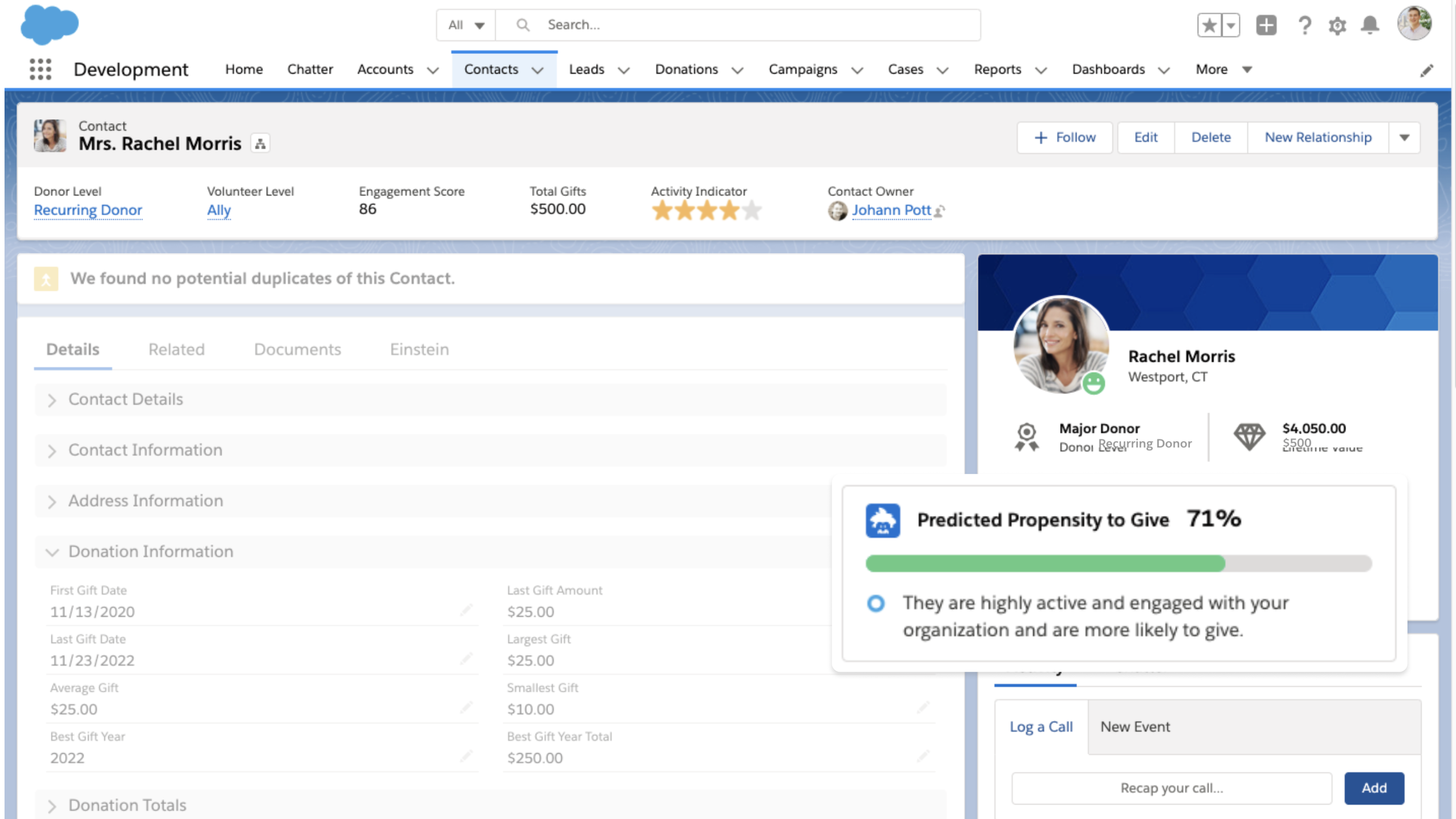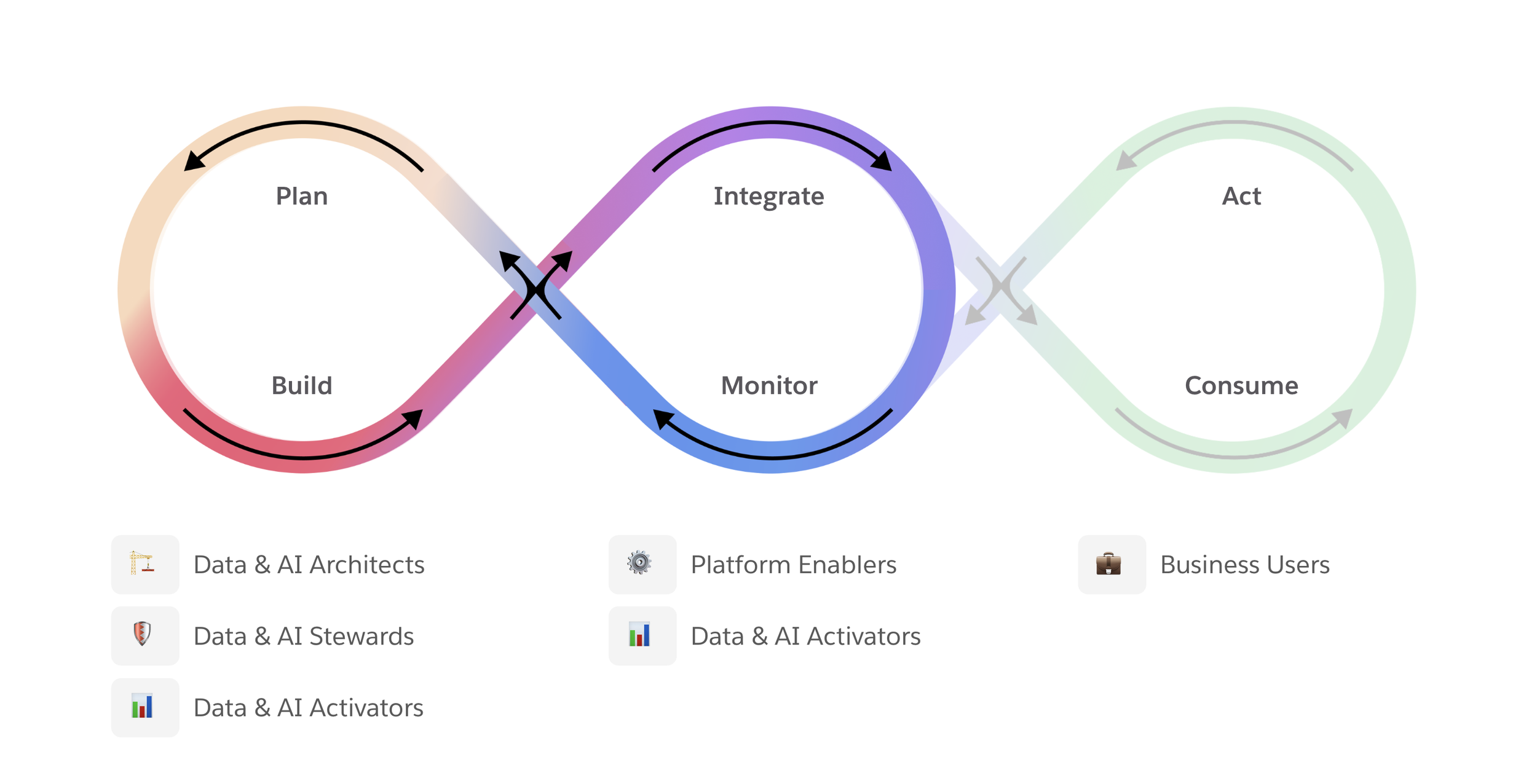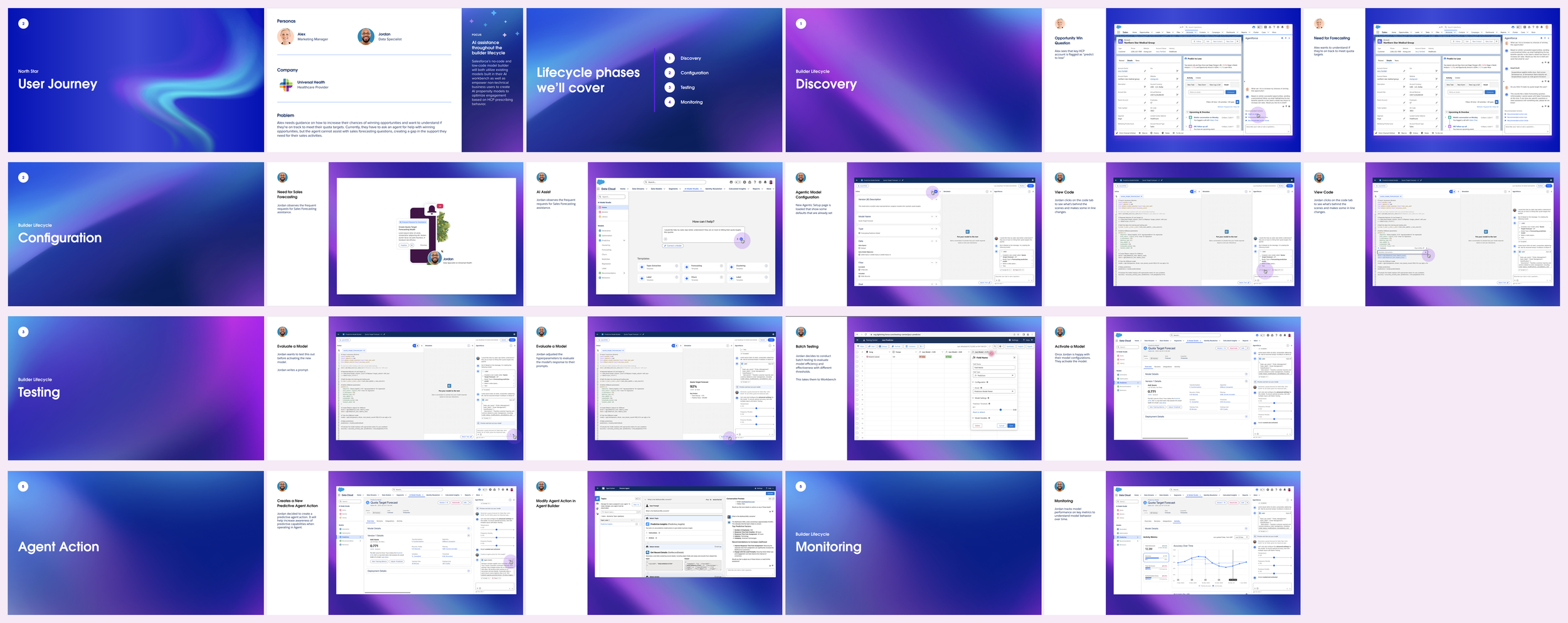Bridging Predictive and Generative AI Through UX Strategy in Action
Led strategic repositioning of Einstein Studio to stay relevant in a generative AI-first world, enabling billions of monthly predictions across hundreds of enterprise customers
Context & Challenge
Salesforce Einstein Studio (Model Builder) is a no-code/low-code platform that enables users to create and deploy predictive AI models within Salesforce. Serving hundreds of enterprise customers, it powers critical business forecasts like opportunity win probability, customer churn prediction, lead scoring, and more.
By mid 2024, Model Builder faced a strategic inflection point. As generative AI dominated company’s roadmap and reshaped customer expectations, static predictions were no longer enough.
Customers didn't just need to know what would happen, they needed to understand why and what to do about it.
Without a clear vision for how Model Builder would evolve, we risked becoming obsolete or deprioritized as resources shifted to Gen AI initiatives. This vision work became critical to secure the product's future in an AI-first Salesforce.
My Role
Led product vision, cross-functional alignment, and design strategy for the predictive + generative AI integration.
Core responsibilities:
Co-defined Vision 2.0 with Product and Engineering
Participated in customer sessions to understand the users problems
Facilitated workshop to secure team-wide alignment and did presentations to get leadership buy-in
Validated strategy through rapid prototyping
Provided creative direction and orchestrated phased execution across multiple releases.
Einstein Studio generated predictions like this 71% propensity score but users were left wondering: Now what? How do I act on this insight?
Uncovering User Needs
Product vision work doesn't start with wireframes, it starts with understanding the root problem. In the start of mid Nov of 2024, I partnered with product and research to conduct in-depth interviews with customers speaking to a range of no/low code and pro code customers from a range of roles in the AI enabler space from data scientists to business analysts to solution architects.
User research validated the problem, and several key themes emerged:
Users wanted to know why predictions were made and what to do next, not just see a score.
Jumping between different touchpoints (dashboard, emails, agents, etc) to get insights and take action was slowing people down.
Users expected predictive and generative AI to work together seamlessly, like a smart assistant, converse in natural language
“It’s almost hard to have generative without predictive. It’s almost like what’s the point of doing the generative if it’s not building in the other…at least in the use cases I have been really thinking about.”
These weren't abstract problems they had real business consequences:
Low adoption of predictive features despite high initial interest
Increased support tickets asking "why did the model predict this?"
Users building workarounds with external tools or spreadsheets
Longer time-to-value and reduced confidence in AI output
“Instead of showing raw data and backend fields, we created simple cards telling reps: “Your customer may be dropping off based on recent sales—contact them now.” This gave reps clear next steps.”
“...the predictive AI market is projected to reach $64 billion in 2025, whereas the spend on generative AI was still estimated to be less than 7%”
Align on the Definition and Needs of a North Star
Led a cross-functional vision workshop with Product, Engineering, UX, Research, and key stakeholders to define our product North Star and align the team around shared use cases, personas around model lifecycle, and clear guidance on when to apply predictive vs. generative AI.
Capture use cases across organizations to tailor predictions to their unique business objectives.
Mapped out multiple personas across the model lifecycle to clarify the distinct needs, handoffs, and collaboration points between roles from data scientists to agent builders. This work established a shared foundation for designing scalable, role-based experiences and informed how the product supports both predictive and generative workflows.
This led to the next question.
“Einstein Studio lets anyone create and manage predictive and generative AI models through natural language and conversational Agents. It connects the full AI lifecycle, from idea to deployment so every user, from no-code to pro-code, can turn data into real-time intelligence.”
The northstar focused on the hybrid approach would unlock two strategic opportunities:
Improving awareness of predictive AI capabilities would strengthen product-market fit across our AI suite
Integrating with generative AI would drive adoption of predictive models
Crafting & Selling a Design Vision
By Dec 2024, I led the creation of a future-state design vision that would transform how users build and consume predictive intelligence to present and get leadership buy-in. I defined the strategic direction and worked closely with Product while guiding a UX team member to execute high-level flows. Together, we crafted a narrative focused on customer outcomes.
The vision centered on two customer outcomes
Users create Predictive Agent Actions, an intelligent capability that allow Salesforce Agents (Agentforce) to invoke predictive models during conversations and use those predictions to make recommendations or take action.
From model creation to deployment, users get guided support at every step, making predictive AI accessible to business users, not just data scientists
The result
Product and Engineering leadership prioritized predictive AI in the 2025 AI product roadmap, which secured resources and strategic commitment.
Bridging of predictive and generative AI elevated from exploratory work to a core pillar of the Einstein platform strategy
Defining Workstreams & Guiding User Experience
I led the UX team in identifying critical user flows, jobs to be done, and validating design solutions through iterative prototyping and rapid usability testing.
Outcome
In June 2025, we introduced Agentforce Predictive Action within Einstein Studio as our first milestone in uniting predictive and generative AI. The release marked a a first step in blending statistical foresight with conversational intelligence to drive smarter, real-time customer experiences.
Impact
2 billion of monthly predictions across hundreds of enterprise customers
Decreased user inputs by 75% (from 8 to 2 clicks) through predictive, conversational agent interactions
For Q4 2025, priortized roadmap for agent-created predictive models, positioning the product for the emerging agentic AI landscape.
Reflections & Learnings
Maintaining consistent advocacy in every planning cycle would have accelerated progress.
Help teams that are in deep production mode to stop, look at the big picture, measure the most significant possibilities and risks for the team and the potential of a product, and estimate if it is a good idea to go into the development cycle.
Expanding Prompt Authoring from a Standalone Tool to a Platform Capability
Transformed Prompt Builder from a standalone tool into a platform-wide AI capability, enabling users to author and reuse prompts seamlessly across Salesforce apps.
Enabling Salesforce Customer Admins to Manage and Protect their User Data
I led the user experience to enable customers to manage their data from different data sources into one platform and defined access control to protect data usage.


